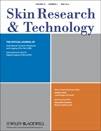Effects of adhesive dressings on stratum corneum conductance
Abstract
Background
Stratum corneum is a fundamental layer of epidermis. It acts as a barrier, with antimicrobial features, regulating skin permeability and integrity as well. Adhesive dressings and their removal could alter this layer, affecting cutaneous water balance and lipid composition of stratum corneum. These changes could be monitored by measurement of cutaneous hydration.
Methods
Ninety-two patients affected by wounds dressed with adhesive tapes or plasters have been studied. Measurement of skin conductance under tape/plaster and in the surrounding healthy skin, immediately after removal of dressing has been performed. Dressing age, wound localization, and characteristics were also considered.
Results
Adhesive dressings alter significantly stratum corneum conductance. Although healthy skin hydration has significant variations throughout the body, cutaneous conductance under adhesive dressing in different areas displays no significative changes. Moreover, the increase in hydration due to adhesive tapes/plasters showed no association with wound dehiscence.
Discussion
Adhesive dressings cause a significative increase in stratum corneum conductance, acting as a barrier to apocrine secretions. Although different hydration levels have been observed in healthy skin throughout the body, no difference exists under adhesive dressing among different regions, suggesting no contraindications in their employment throughout the body.
Conclusion
Increase in cutaneous hydration showed no correlations with wound dehiscence, thus confirming safety and practicality of these dressings.




